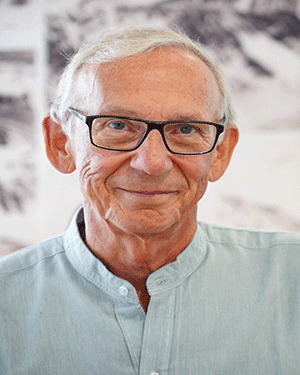Hermann Brugger
M.D. Professor

Presents:
Synopsis:
Most avalanches that affect winter recreationists are triggered by the recreationists themselves. Avalanche survival depends mainly on the immediate extrication of completely buried avalanche victims by bystanders before organised rescue can arrive, then on professional on-site treatment and on the optimal choice of destination hospital using established prognostic criteria. Survival probability during complete avalanche burial is a function of time and other factors that affect survival, including airway patency, the presence of an air pocket in front of the mouth or nose, and the depth of burial. Trauma pathophysiology is mainly related to types of injuries. Survival is determined by the severity of the trauma, by the possibility of breathing in avalanche debris, and by the presence of accidental hypothermia.
Most mountain areas of Europe and North America that are popular for winter recreation have pre-hospital emergency care available by organised rescue groups. Search and rescue of avalanche victims should be initiated as promptly as possible. Immediately after an avalanche burial, every minute may be crucial for survival. Organised rescue operations should be equipped to manage emergency conditions on the scene, including normothermic cardiac arrest, accidental hypothermia, and multiple trauma. Pre-hospital triage should identify victims with a high risk of normothermic cardiac arrest due to asphyxia, a nonsurvivable condition, as opposed to victims in whom early hypercapnia may have increased the rate of core temperature cooling. Only victims who have sustained cardiac arrest due to hypothermia are likely to benefit from extracorporeal life support (ECLS). Although there are international recommendations for the management of avalanche victims, evidence regarding advanced life support (ALS) is scarce. Transfer of information from bystanders to organised rescue teams and from rescue teams at the accident site to the hospital is often suboptimal. An avalanche checklist is available that may improve outcomes by promoting the transfer of critical information. There is still a need for protocols to optimise pre-hospital triage, initial on-site treatment, and transport to suitable destination hospitals. The HOPE score will be introduced to optimise in-hospital triage and management of avalanche victims.
Bio:
Hermann Brugger MD, born in Bruneck / Bolzano / Italy, December 30th, 1951; married to the painter Elfriede Gangl, 1978; children: Franz, Johanna. MD at the University Vienna, Austria, 1978;
A medical assistant at the Hospital Sisters of Charity, Linz, Austria, 1979-1983. General Practitioner at the National Health Service, Bruneck, Italy, from 1983 to 2017.
Emergency physician for the Emergency Medical System and mountain rescue physician of the Mountain Rescue Organization of South Tyrol from 1983 to 2017.
Eduard Wallnöfer Prize Tyrolean Industry, 1992; Georg Grabner Prize University Vienna, 1995; Research Award of the Wilderness Medical Society USA, 2012; Paul Auerbach Award Wilderness Medical Society USA, 2016.
Member of the Board of the Italian Society of Mountain Medicine, 1999-2005; Member of the Board of the Medical Commission of the Union Internationale des Associations d’Alpinisme UIAA MEDCOM, 2001-2009; President of the International Commission for Mountain Emergency Medicine ICAR MEDCOM, 2001-2009; Member of the Board of the International Society of Mountain Medicine ISMM, from 1999; President of the International Society of Mountain Medicine ISMM, from 2016; Member of the International Commission for Mountain Emergency Medicine ICAR MEDCOM, from 1991; Associate Editor of High Altitude Medicine and Biology, from 2001; Guest lecturer University Padova, from 1999; Associate Professor and lecturer at the Innsbruck Medical University, from 2006; Founder and head of the EURAC Institute of Mountain Emergency Medicine at the European Academy Bolzano, Italy, from 2009. President of the International Society of Mountain Medicine ISMM, from 2016. Around 60 book chapters, 280 publications (current cumulative IF [2020-10-27]: 869) in emergency medicine.
